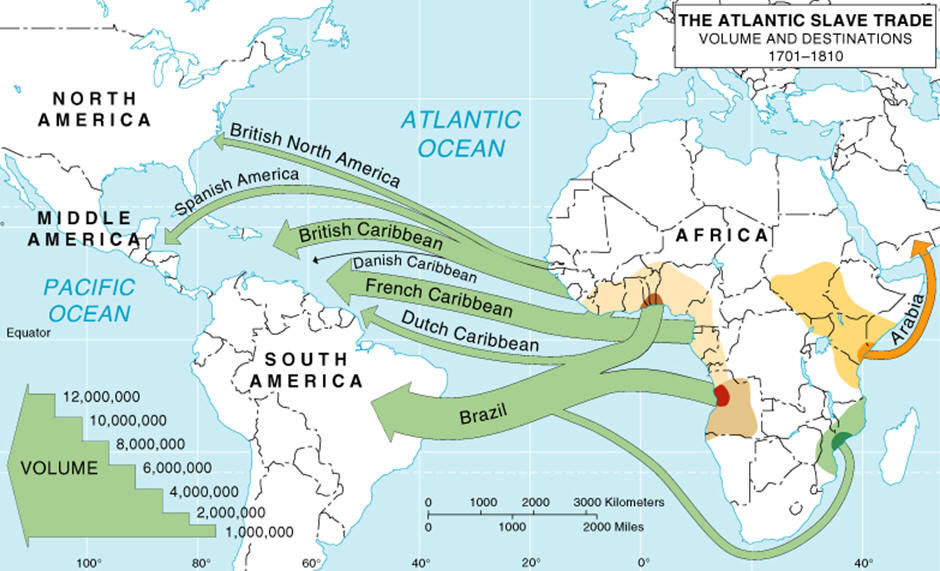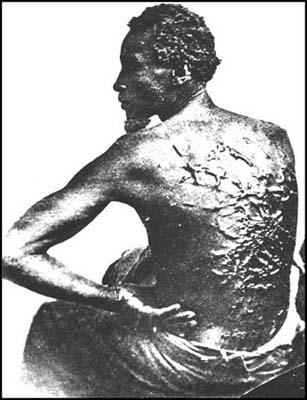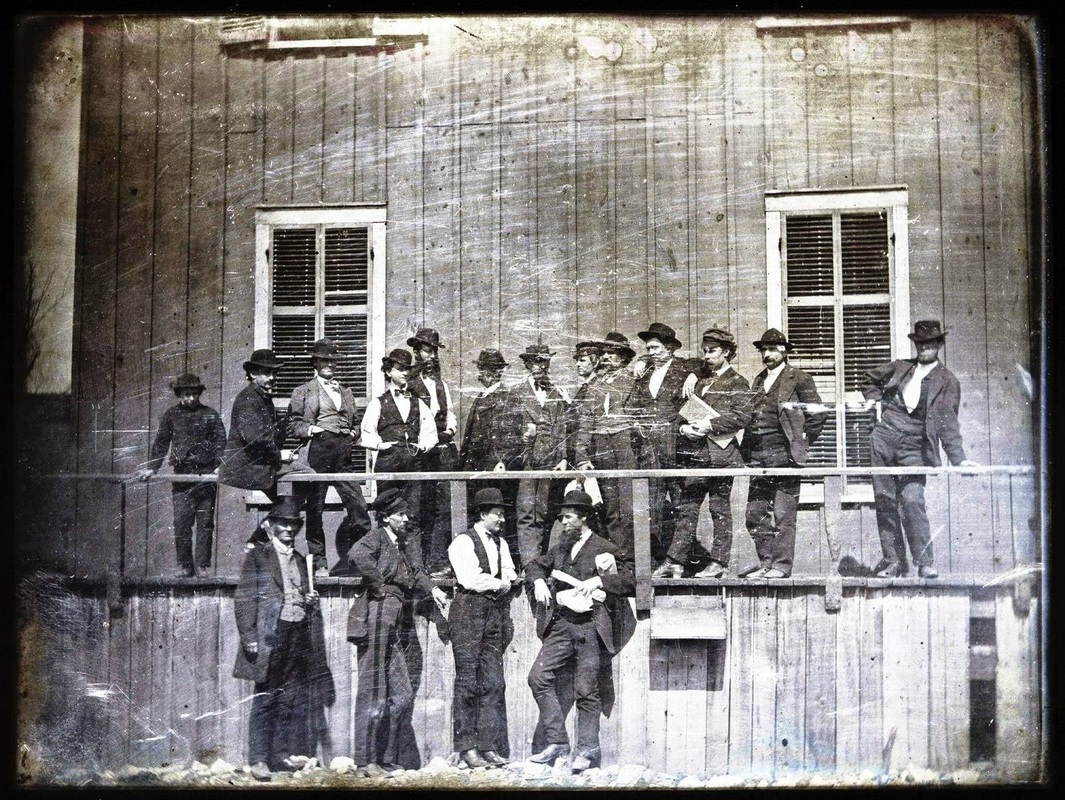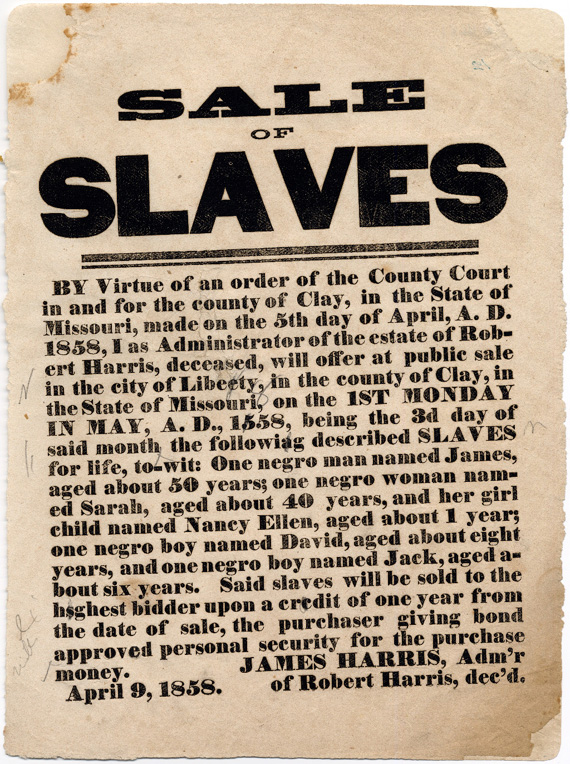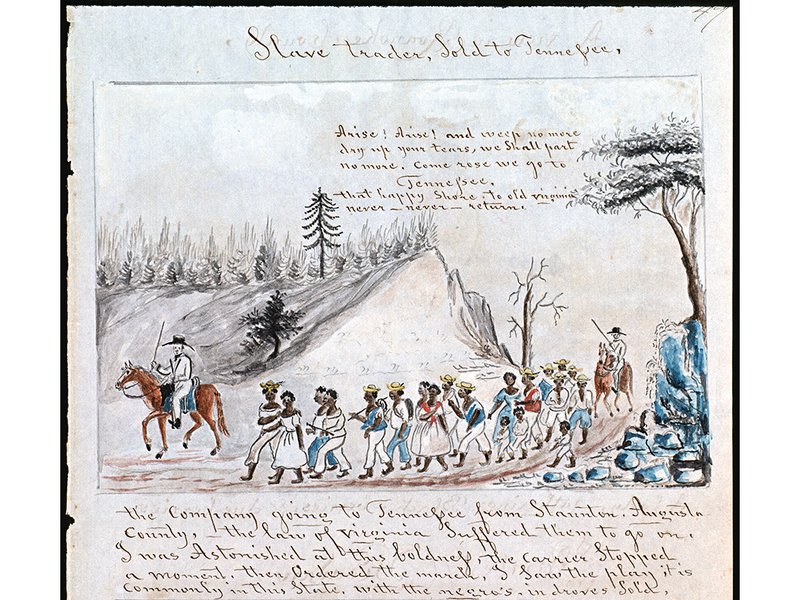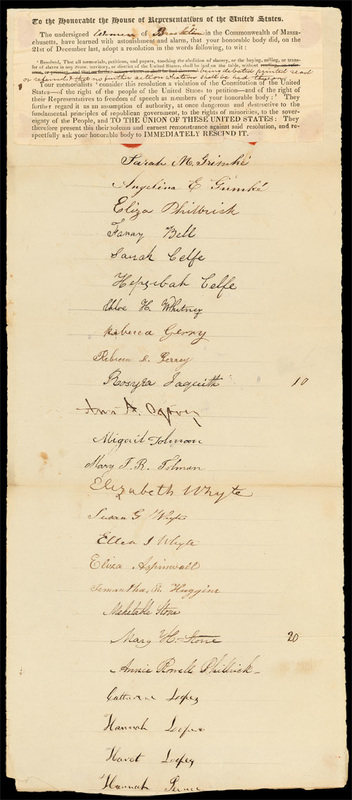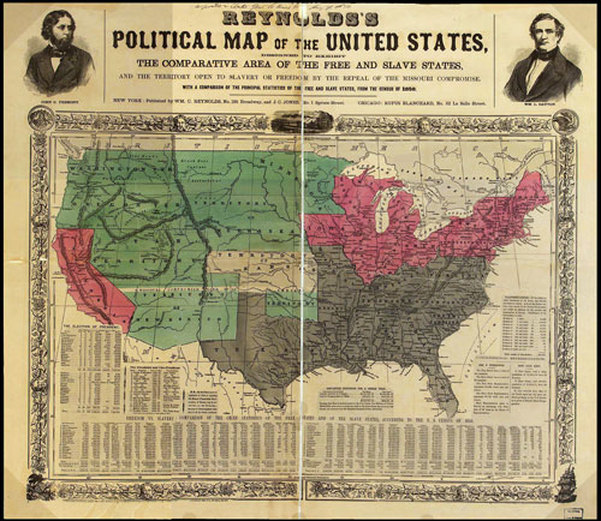The Atlantic Slave Trade
The Slavery System
|
We envision slavery as a static institution, but the reality is that how slavery was defined changed dramatically over the course of its history in the colonies and in the nation.
The years 1450-1750 brought enormous changes to the North American continent. The native Americans, or Indians, as the Europeans came to call them, first encountered European explorers, and before long, saw their world transformed and largely destroyed by European settlers. And European explorers not only ventured to the lands and natural wealth of the Americas; they also traveled to Africa, where they began a trans-Atlantic slave trade that would bring millions of Africans to the Americas as well. This slave trade would over time lead to a new social and economic system: one where the color of one's skin could determine whether he or she might live as a free citizen or be enslaved for life. http://www.pbs.org/wgbh/aia/part1/narrative.html |
|
|
|
We all know that Crispus Attucks, an African American, is considered to be the first casualty of the Revolutionary War; however, we know little about him in particular or of the lives of other African Americans during that time period.
The story of the American Revolution as traditionally recounted is the saga of the thirteen colonies fighting their colonial ruler, Britain, for independence. But an equally compelling part of the story is the personal, religious, and legal challenges of African Americans of this period and their allies to slavery. The spirit of liberty and the disruptions of the Revolutionary era encouraged African American men and women to choose sides -- both Patriot and Loyalist -- and fight to define what this nation would become. http://www.pbs.org/wgbh/aia/part2/narrative.html |
During its first 50 years the United States transformed itself from a small republic into an expansive democracy for white Americans. The nation tripled its population, doubled in size, and extended slavery to parts of the Western frontier. For black Americans, this same period was a contradictory mix of community-building for free blacks and entrenched enslavement for those not yet emancipated.http://www.pbs.org/wgbh/aia/part3/narrative.html |
|
|
|
As westward expansion took hold, the question of whether the United States would be a proslavery or antislavery nation took on new importance. In the North, antislavery forces included abolitionists, who wanted a future without slavery so that black people could be free, and Free Soil advocates, who resented having to compete with owners of slave-tended plantations for use of new lands. White Southern planters wanted a future for themselves and their prosperous way of life, which depended on the institution of slavery.http://www.pbs.org/wgbh/aia/part4/narrative.html |
Religion and Reform
The Second Great Awakening (1740 to 1890)
Your browser does not support viewing this document. Click here to download the document.
The Abolitionist Movement: An Overview
Your browser does not support viewing this document. Click here to download the document.
Debate About Westward Expansion of Slavery
|
While the consideration of slavery is generally framed as a north/south debate, much of the concern over slavery was also driven by the acquisition and settlement of new lands in the West. Click on the image to the let to visit an interactive site which details the legislation and compromises focused on the issue of slavery.
Your browser does not support viewing this document. Click here to download the document.
|
Gag Rule
Background Information
The gag rule is a parliamentary procedure, sometimes called “rules of order,” used to limit or stop debates of a particular topic. Rules of order are the guidelines followed by a governing group such as Congress, state legislatures or school boards to conduct business or meetings. Such rules are intended to maintain order and respectability, to consider the will of the majority, to preserve the rights of the minority and to facilitate the orderly transaction of the business of an assembly. In Congress, the House of Representatives used the “gag rule” to prohibit discussions and debates of the anti-slavery petitions. In the late 1830s, Congress received more than 130,000 petitions from citizens demanding the abolition of slavery in Washington, D.C. and other federallycontrolled territories. As antislavery opponents became more insistent, southern members of Congress were increasingly adamant in their defense of slavery.
The Speaker of the House James K. Polk of Tennessee, appointed a committee to address how best to handle the petitions. The committee included several southern congressmen who recommended that all petitions regarding slavery should automatically be tabled and that no further action should be taken upon them. With these recommendations, the House passed a resolution that all abolition petitions must go to a subcommittee with instructions that Congress could not interfere with slavery, including in the District of Columbia. The gag rule was adopted at the beginning of each Congress in 1837, 1839, 1841, and 1843, making it a standing rule of the House. At first, only a small group of congressmen, led by Representative John Quincy Adams of Massachusetts, opposed the rule. Adams shouted during a roll call vote, “I hold the resolution to be a direct violation of the Constitution of the United States.” Adams fervently fought against the gag rule, declaring it a restriction on free speech.
Adams used a variety of parliamentary tactics to try to read slavery petitions on the floor of the House. One of Adam’s tactics was to present petitions from women praying for the abolition of slavery. Women, as non-voters, were not banned from petitioning by the gag rule. As Adams attempted to protest the gag rule, an influx of petitions came to Congress not only opposing slavery, but also protesting the House’s use of the gag rule. Gradually, as antislavery sentiment in the north grew, more northern congressmen supported Adams’ argument that whatever one’s view on slavery, stifling the right to petition was unconstitutional. Adams protested each renewal of the rule until he gained enough votes to repeal the gag rule in 1844.
Source: U.S. House of Representatives Website: Historical Highlights https://www.visitthecapitol.gov/sites/default/files/Education/lesson-plan/LessonPlans_Round4/13-059_9_GagRule_CivilWar_LP_v4.pdf
http://history.house.gov/Historical-Highlights/1800-1850/The-House-of-Representativesinstituted-the-“gag-rule”/
The gag rule is a parliamentary procedure, sometimes called “rules of order,” used to limit or stop debates of a particular topic. Rules of order are the guidelines followed by a governing group such as Congress, state legislatures or school boards to conduct business or meetings. Such rules are intended to maintain order and respectability, to consider the will of the majority, to preserve the rights of the minority and to facilitate the orderly transaction of the business of an assembly. In Congress, the House of Representatives used the “gag rule” to prohibit discussions and debates of the anti-slavery petitions. In the late 1830s, Congress received more than 130,000 petitions from citizens demanding the abolition of slavery in Washington, D.C. and other federallycontrolled territories. As antislavery opponents became more insistent, southern members of Congress were increasingly adamant in their defense of slavery.
The Speaker of the House James K. Polk of Tennessee, appointed a committee to address how best to handle the petitions. The committee included several southern congressmen who recommended that all petitions regarding slavery should automatically be tabled and that no further action should be taken upon them. With these recommendations, the House passed a resolution that all abolition petitions must go to a subcommittee with instructions that Congress could not interfere with slavery, including in the District of Columbia. The gag rule was adopted at the beginning of each Congress in 1837, 1839, 1841, and 1843, making it a standing rule of the House. At first, only a small group of congressmen, led by Representative John Quincy Adams of Massachusetts, opposed the rule. Adams shouted during a roll call vote, “I hold the resolution to be a direct violation of the Constitution of the United States.” Adams fervently fought against the gag rule, declaring it a restriction on free speech.
Adams used a variety of parliamentary tactics to try to read slavery petitions on the floor of the House. One of Adam’s tactics was to present petitions from women praying for the abolition of slavery. Women, as non-voters, were not banned from petitioning by the gag rule. As Adams attempted to protest the gag rule, an influx of petitions came to Congress not only opposing slavery, but also protesting the House’s use of the gag rule. Gradually, as antislavery sentiment in the north grew, more northern congressmen supported Adams’ argument that whatever one’s view on slavery, stifling the right to petition was unconstitutional. Adams protested each renewal of the rule until he gained enough votes to repeal the gag rule in 1844.
Source: U.S. House of Representatives Website: Historical Highlights https://www.visitthecapitol.gov/sites/default/files/Education/lesson-plan/LessonPlans_Round4/13-059_9_GagRule_CivilWar_LP_v4.pdf
http://history.house.gov/Historical-Highlights/1800-1850/The-House-of-Representativesinstituted-the-“gag-rule”/
The Compromises
|
The Missouri Compromise -- Deal promoted by then speaker of the house, Henry Clay, to reach a balance of slave and free states. Maine was admitted as a free state and Missouri was admitted as a slave state.
|
|
|
|
Compromise of 1850 -- After the Mexican war ended in 1848, the problem of handling the distribution of slave vs free states once again reared its ugly head. See also: http://www.ushistory.org/us/30d.asp
|
|
The Kansas/Nebraska Act -- This act was prompted by the goal of building railroads to unite the country. The territories of Kansas and Nebraska had to be organized and admitted into the union as states in order for the railroad to pass through them. This meant that the issue of slavery had to once again be addressed. One of the many consequences of the act is that it enraged Abraham Lincoln to such an extent that he resumed his political ambitions. See also: http://www.ourdocuments.gov/doc.php?flash=true&doc=28 -- primary document
|
|
